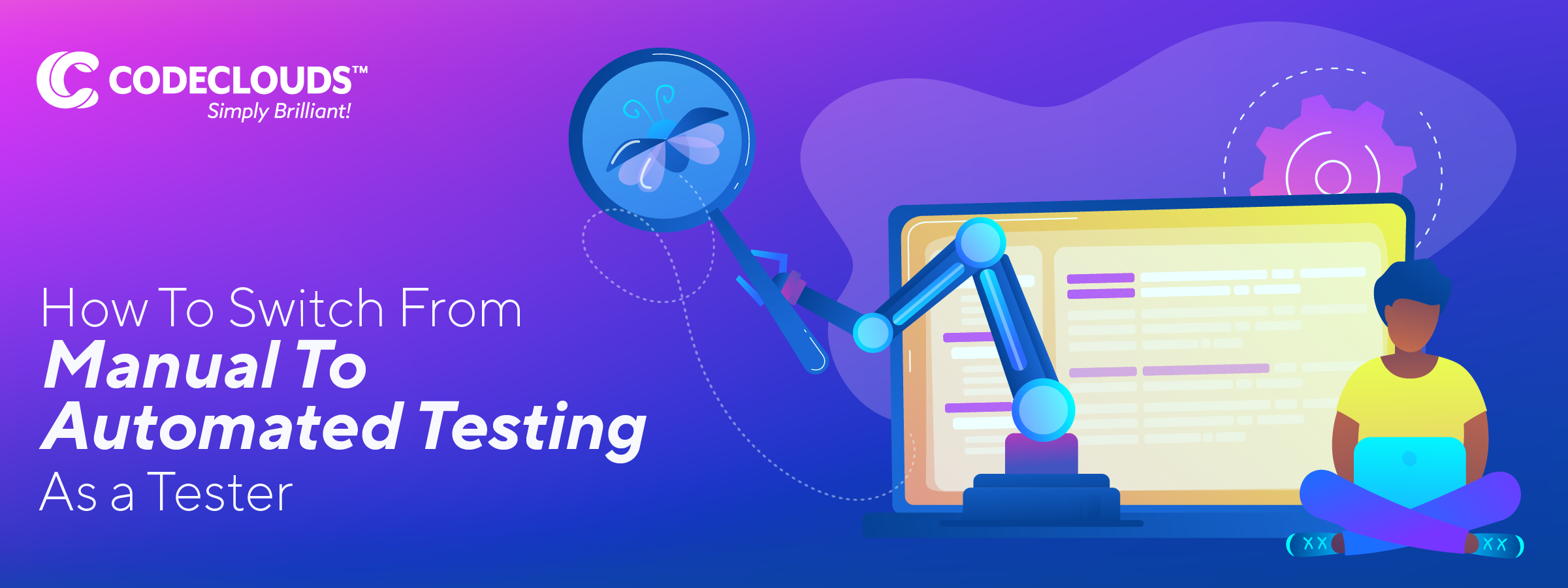Overview
QA (Quality Assurance) is changing, leaving many testers keen to make the switch from manual to automated testing. Fortunately for those considering the change, the two testing types are more similar than you think, and the change isn’t insurmountable.

Why Should You Switch From Manual To Automated Testing?
It’s a common misconception that manual testing is dying, but it’s now becoming difficult to get jobs solely in manual testing. Here’s why:
- Automated testing programs have become cheaper.
- Manual testing is slow and error prone (especially in processes like regression testing), so it’s best not to use it when you don’t need it.
- A largely manual testing process doesn’t fit in very well with Agile Software Development.
- Automated testing is faster once it’s set up, mostly error free, and can run without continuous input.
How Hard Is It To Get Into Automated Testing?
As a manual tester, you already have many of the skills for automated testing. All automated testers have to understand manual testing, both for processes and because there are still situations where you need to use manual testing, such as usability testing, Ad Hoc testing, and exploratory testing. Manual testing is also good for tests involving UX and UI, small projects, unstable projects, and any processes that can’t be automated.
However, there are things that manual testing hasn’t prepared you for…
How To Get Into Automated Testing?
Improving on skills that you already have as a manual tester as well as learning some new ones will allow you to get into automated testing.
Learn To Use Automated Testing Tools
Automated testing tools are the main thing you need to learn. Some examples of popular automated testing tools are:
- Selenium WebDriver: Selenium WebDriver is one of the most popular automated testing tools. It allows you to do cross-browser tests and can be used with several different languages including Python, Ruby, Java, and C#.
- Katalon: Katalon is a Java-based program based on Selenium and Appium, which can test your mobile apps on real devices. It can be used as a no-code tool if necessary.
- Appium: Appium is a tool that is mostly for testing mobile applications. You can use it with several different languages (e.g. Python, Java and PHP).
- Kobiton: Kobiton is a mobile testing tool which includes no-code options.
- Qmetry: Qmetry is an all-in-one tool run on Java that can test websites and desktop and mobile applications.
You may also need to know related technologies, such as the bug tracking and Agile Project Management app Jira. It’s also helpful to learn some of the programming languages of the website and web applications you will be testing.
Stay Up To Date
Though you’ll still be expected to have a computer science or information technology degree, degrees and formal qualifications don’t matter as much when becoming an automated tester as experience. Along with experience, you also should have up-to-date knowledge about automated testing tools and processes.
Brush Up on Agile Development
As you know, software development and the testing process has changed since the days of manual-only testing. Modern automated and manual testing processes are usually run using Agile Software Development, which you should be familiar with. Agile Development tends towards automated testing simply because automating processes like regression testing speeds up and streamlines development.
Network
If you’re job searching, networking is always important; making the switch from manual to automated testing is no exception. There’s different places where you can network:
- Previous jobs: As an experienced manual tester, you’ll already have connections in automated testing, who you can use to help you get job interviews or upskill.
- LinkedIn: A good LinkedIn profile will get you noticed, and LinkedIn is great for networking with professionals in your industry.
- GitHub: GitHub is another good place to network, and you can show off your coding portfolio.
Make Gradual Moves
You don’t have to jump into automated testing all at once (and you’ll probably find it more difficult if you do). You may be able to ask for some automated testing work at your current job; if you’re searching, you might be able to find a job that is mostly manual testing but with a little bit of automation and move fully into automated testing from there.

To switch from manual to automated testing, you’ll need to do some learning—mostly coding and automated testing programs—but that doesn’t mean it’s not something you can’t or shouldn’t do, if it’s the right choice for your career.
Looking for a job in automated testing that utilizes your skills in manual testing? CodeClouds is currently hiring Automation Testers in Kolkata.
On the other end, if you’re looking for some Automation Testers for your project, Codeclouds offers dedicated Automation Testers for hire.
Share this article
275 reads
Similar Reads








